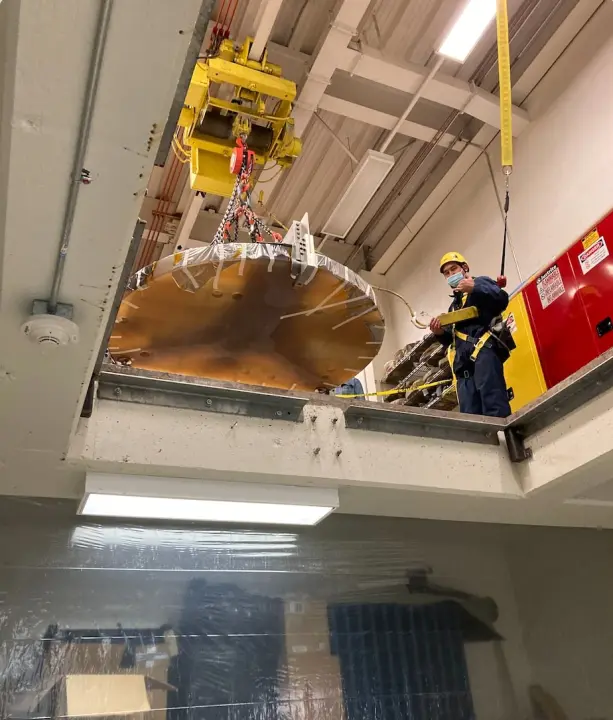Astronomers will soon have a new tool for hunting exoplanets, as the W. M. Keck Observatory’s Keck Planet Finder (KPF) instrument recently took its first observations. KPF’s “first light” observations captured data from Jupiter, demonstrating how the instrument will be able to detect planets beyond our solar system in the future.
Located at Maunakea in Hawaiʻi, the new instrument detects exoplanets using the radial velocity method. This works by observing a star and looking for a slight wobble, caused by the gravity of planets orbiting around it. This wobble changes the light coming from the star just slightly, in a way that can be used to work out the properties of the planet. The instrument measures spectra, or the wavelengths of light coming from a star, with more massive planets making bigger wobbles.

The spectrum of Jupiter was captured on Wednesday, November 9, and was followed up by a spectrum of a star called 51 Pegasi which is known to host a planet called 51 Pegasus b. “Seeing KPF’s first astronomical spectrum was a moving experience,” said Andrew Howard, the KPF principal investigator and a professor of astronomy at Caltech, in a statement. “I’m excited to use the instrument to study the great diversity of exoplanets and to tease apart the mysteries of how they formed and evolved to their present states.”
This method of looking for exoplanets is particularly good for spotting larger planets that orbit close to their stars, allowing for a view of exoplanets in the habitable zone of smaller, cooler stars.
“Stars that are cooler than our sun have habitable zones that are located closer to the star,” Howard said. “Any Earth-like planets in this zone would be huddled close to their stars like it is a campfire. We will continue to tune and refine KPF to detect even fainter wobbles, with the goal of eventually having the sensitivity to detect Earth-mass planets that orbit stars like our sun, the true Earth analogs.”

KPF will be able to detect these very slight wobbles due to its high sensitivity, which is able to see movements of stars as small as 30 centimeters per second. The spectrometer was built using a hybrid glass-ceramic material called Zerodur, which can keep its shape consistent even as temperatures change, making it highly sensitive as it avoids distortions due to temperatures. “The material, which comes in giant slabs, is very fragile and hard to work with, but it is what makes KPF so sensitive to smaller planets,” Howard said.
The instrument is now in its commissioning phase and will begin research work next year.



